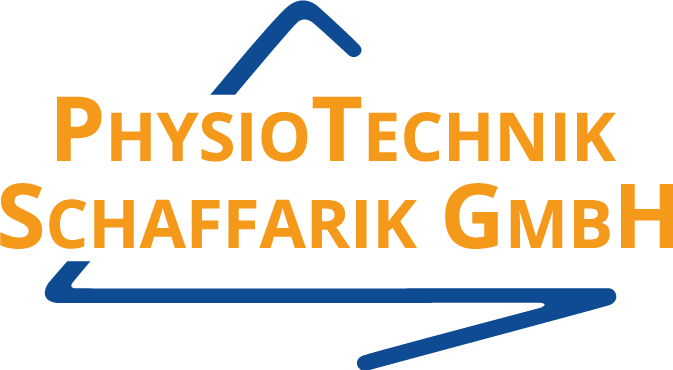Therapy Options

Passive and assistive movement of the leg
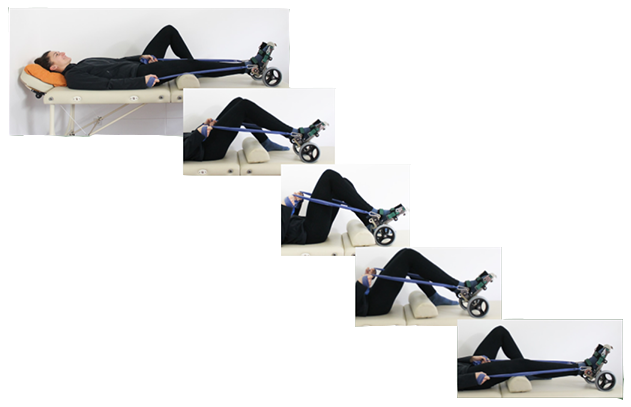
The weight of the leg can be transferred to the device for gentle movement (especially helpful for weak or painful legs). The rubber bands are used to guide the device. The leg can be moved passively or with assistance.
Hip and knee joint mobilization
Flexion mobilization
Extension mobilization
Concentric and eccentric muscle training
Activation of the leg muscles

activation of the extensors
Concentric and eccentric stretching against the resistance of the rubber band

activation of the flexors
Slow flexion and extension against gravity
Therapy for everyday life
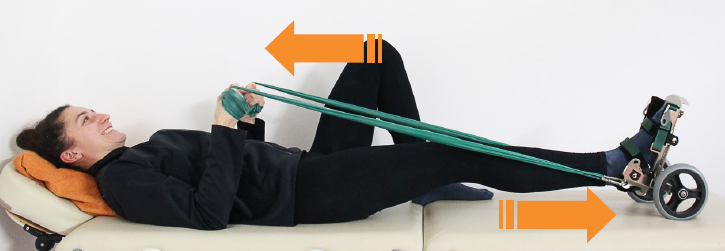
Pulling on the rubber bands while lying down is comparable to lifting a heavy object while standing.
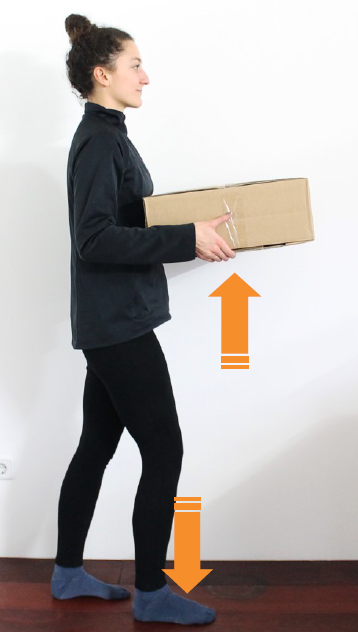
Therapy for the ankle joint
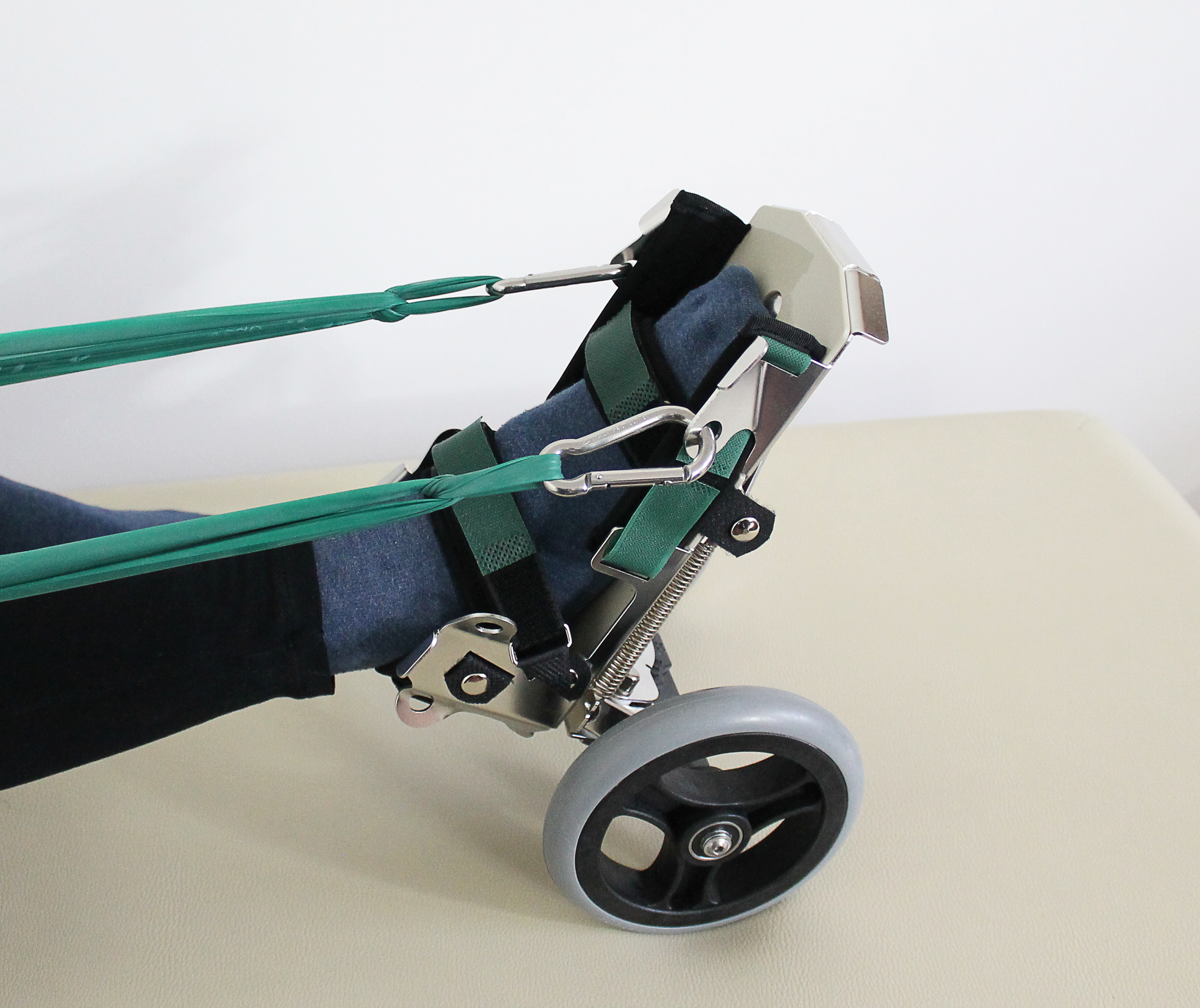
Activation of the plantar flexors
Carabiner in the forefoot area
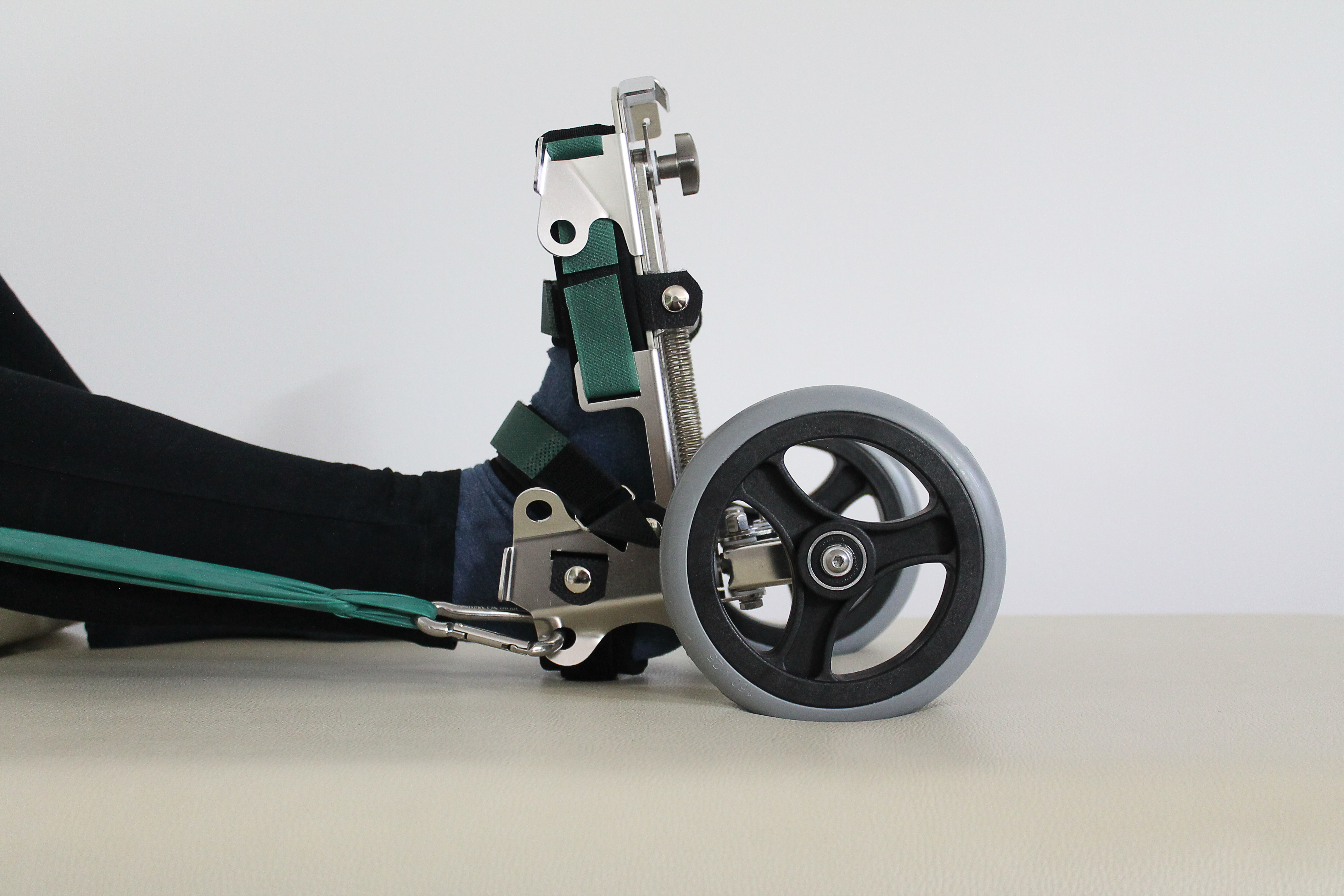
Activation of the dorsiflexors
Carabiner in the heel area
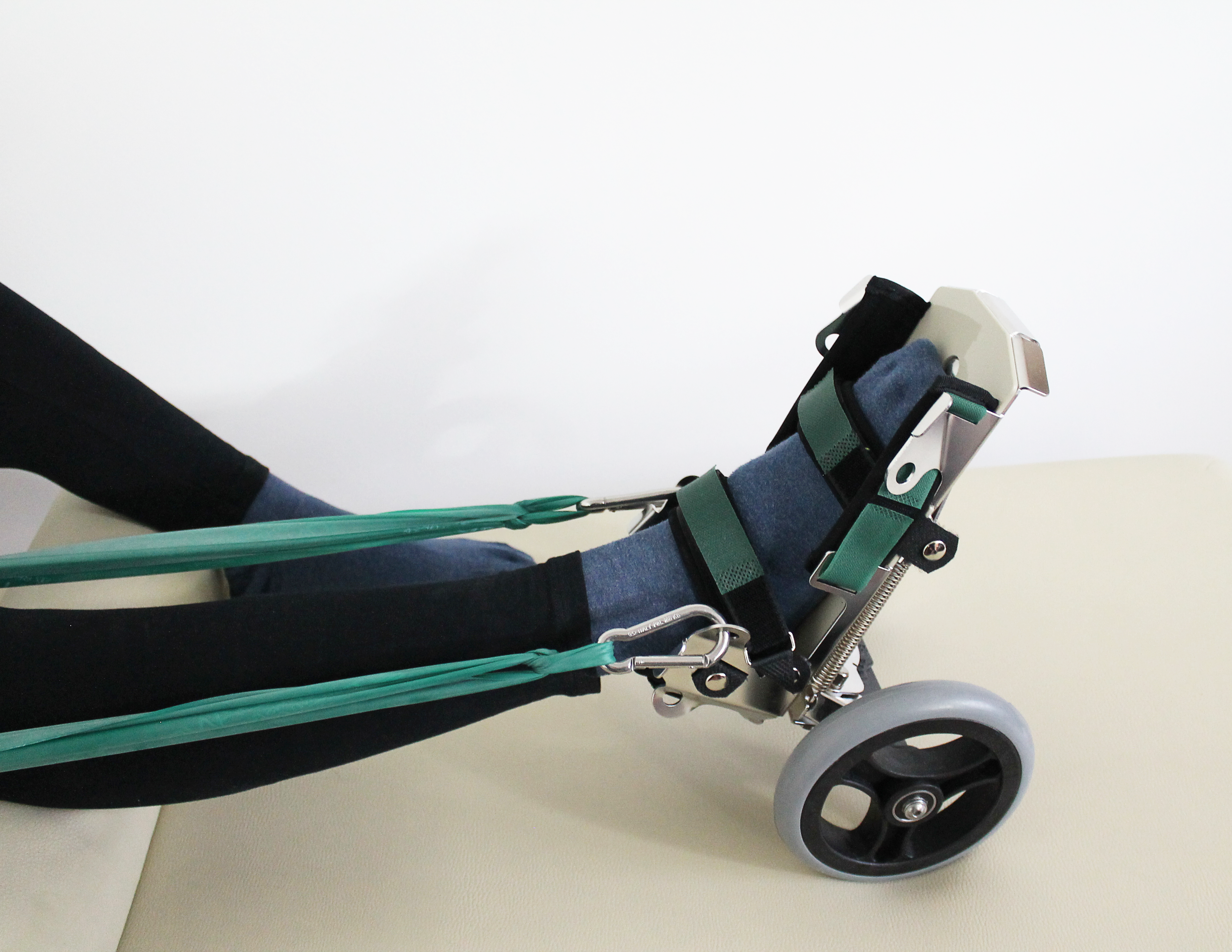
Neutral position for hip and knee therapy
Carabiners in the ankle area hardly cause any torque.
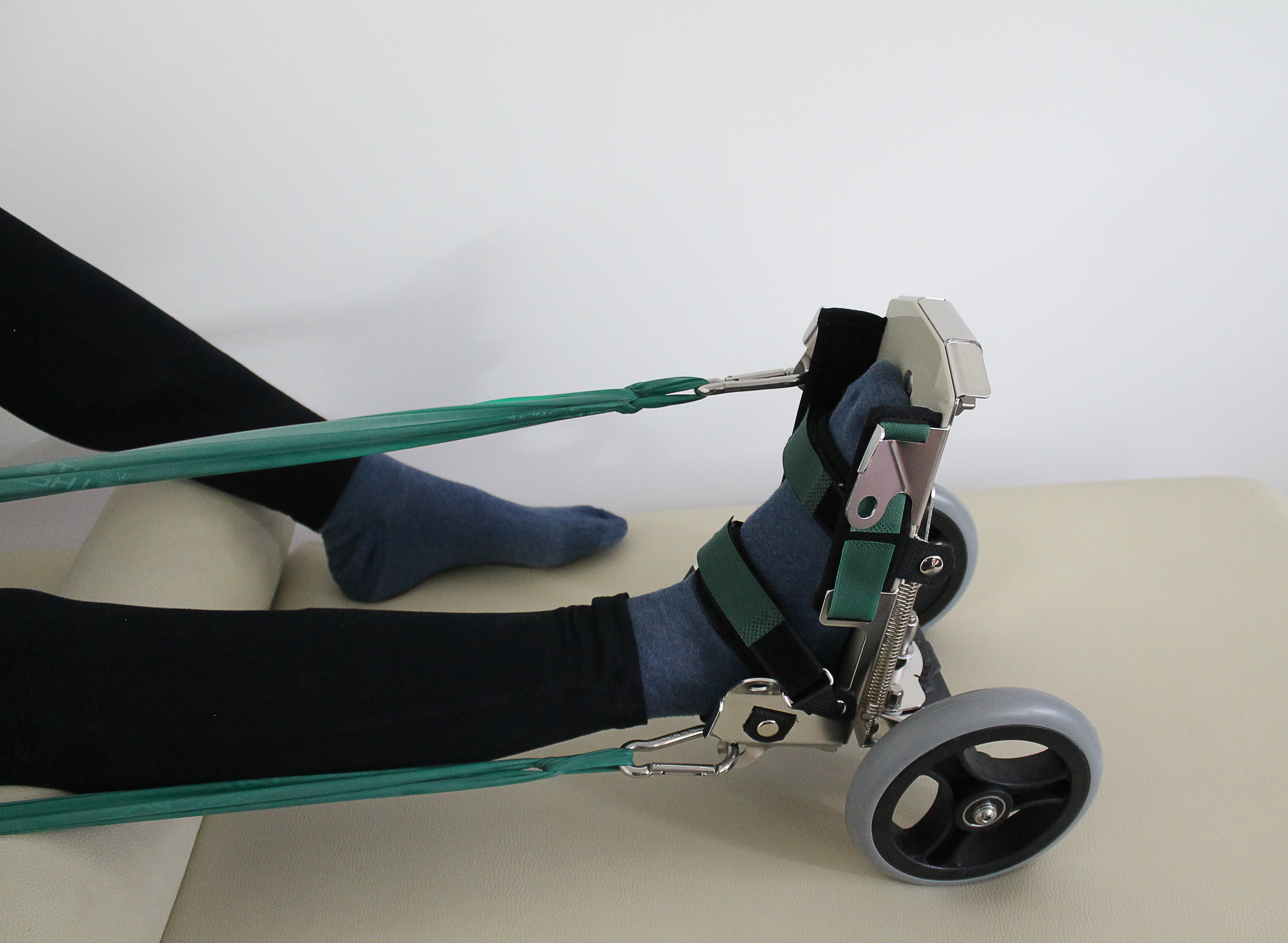
Activation of the foot muscles
Diagonal arrangement of the carabiners
Therapy after amputations with prostheses
Preparing the residual limb for full weight bearing
Activation of the muscles in the residual limb area
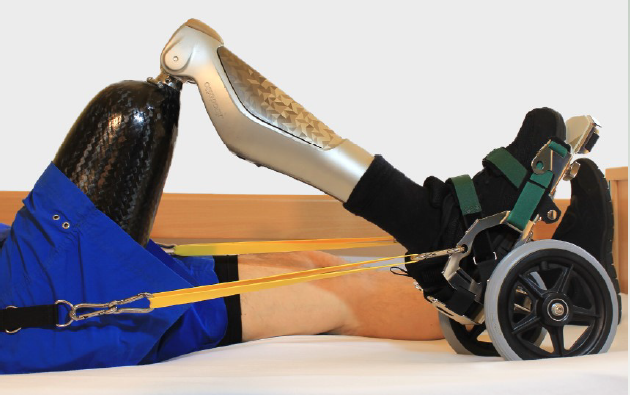
Concentric and eccentric activation of the hip extensors against the resistance of the rubber bands
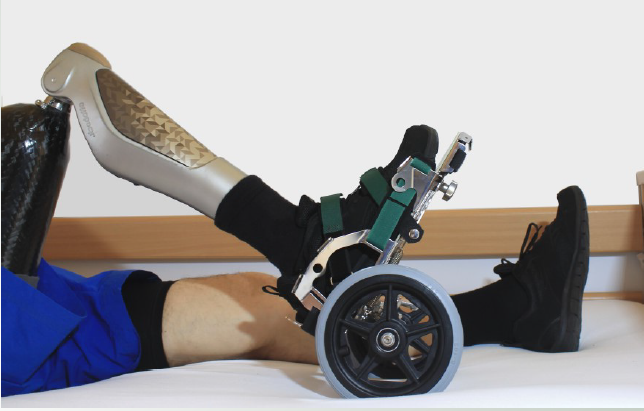
Concentric and eccentric activation of the hip flexors without rubber bands - movement against gravity
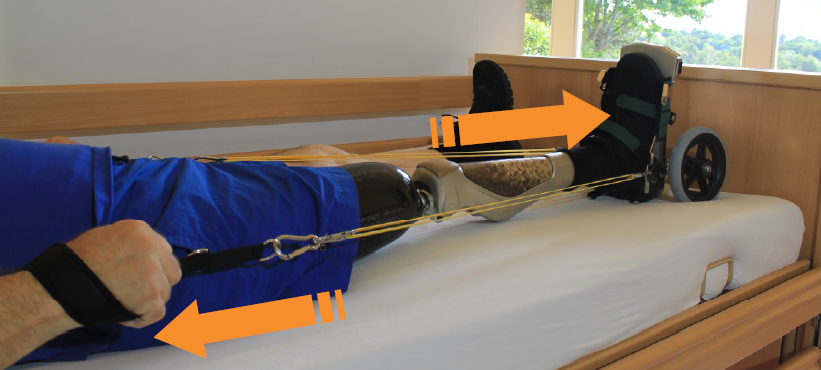
Active trunk extension
Therapy against a limping mechanism - active stretching of the leg in length while simultaneously pulling the rubber bands
Therapy Examples
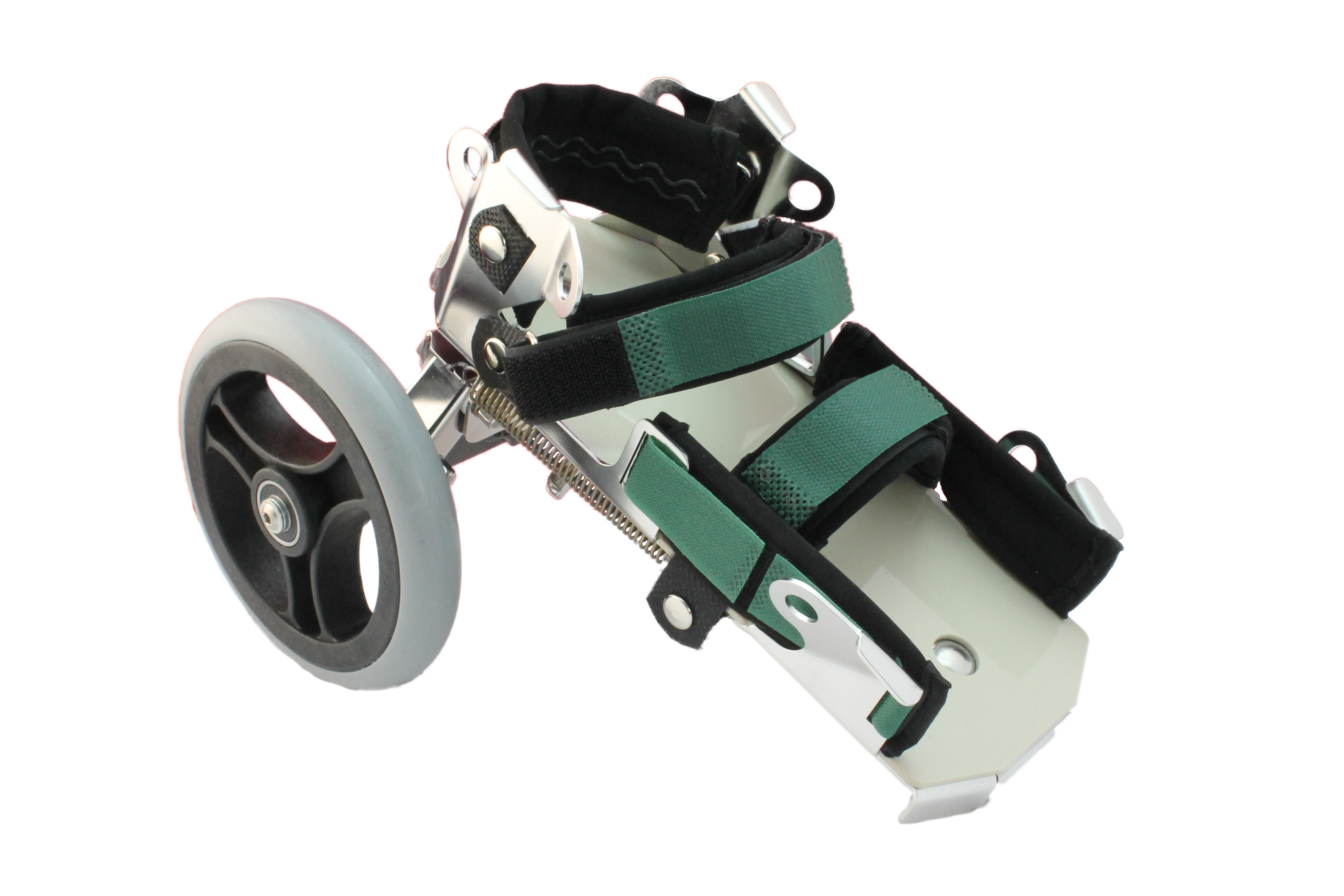
Trauma Surgery
Accident: fall from a great height (patient 52 years)
Diagnoses: tibia and fibula fractures on both sides, comminuted fracture of the heel and ankle bone on the right, fracture L4
Previous
Next


